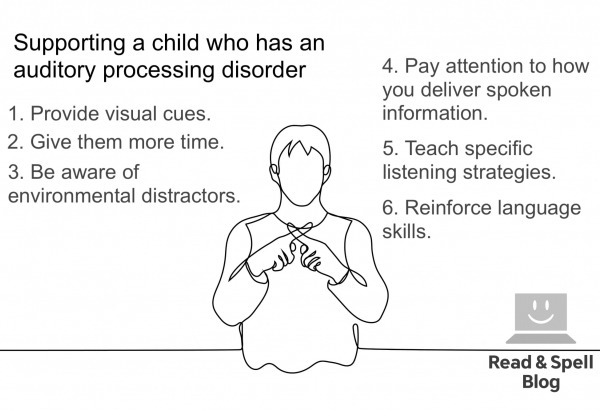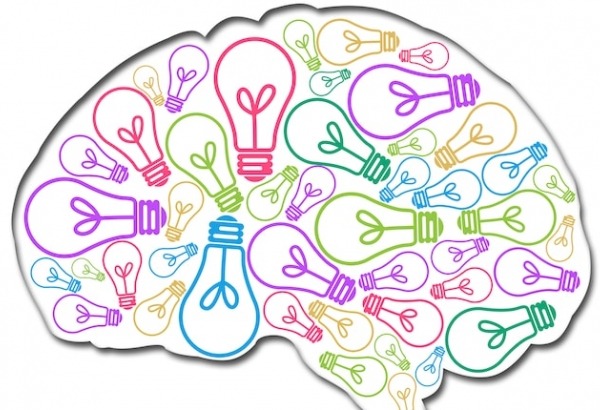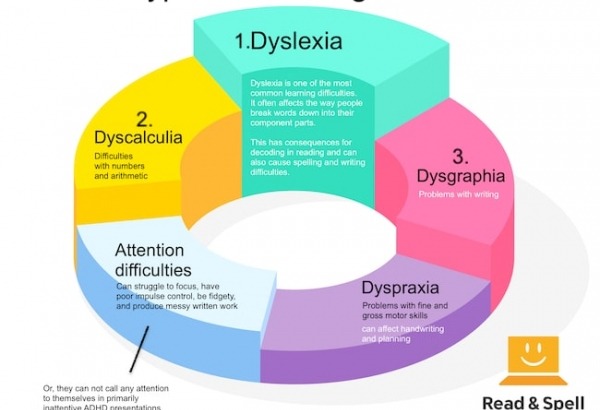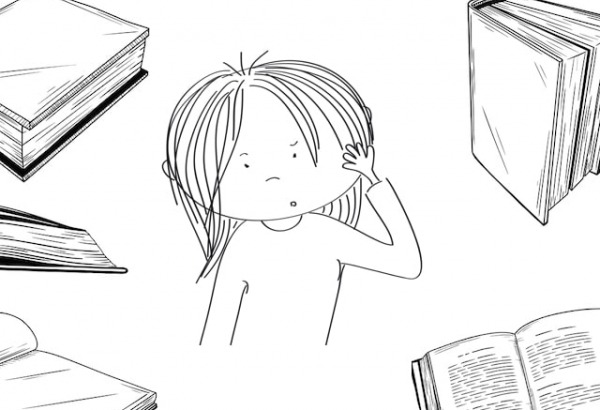ADHD Reading problems
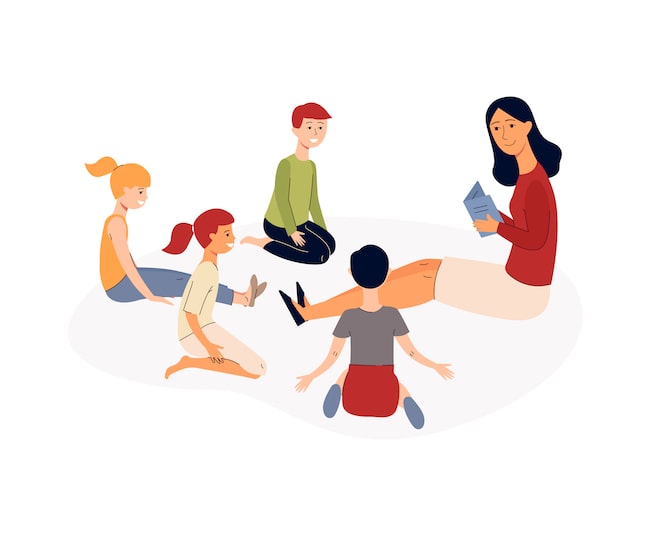
While not all children with ADHD attention deficit hyperactivity disorder experience difficulties when it comes to reading, some studies estimate around half may struggle with literacy skills.
That’s because attention issues make it harder for children with ADHD to concentrate on a text. They may have trouble following a narrative, holding what they've read in memory, connecting a text to their prior knowledge of a topic and/or guessing at the meaning of unknown words met in context. If auditory processing is also an issue, sounding out words may be a challenge.
When ADHD and dyslexia present together, which occurs in about 1/3 of ADHD cases, both reading fluency and comprehension are affected. The child may take longer to get through a page and stumble when reading aloud. There can also be difficulties sitting still for long periods, in order to read the assigned pages.
Over time, this can lead to frustration, avoidance of activities that involve reading and writing, and low self-esteem.
Moreover, students in later grades are expected to use their reading skills to learn about new subjects and complete homework assignments. Comprehension challenges can negatively affect progress across the school curriculum.
The good news is there are plenty of comprehension strategies and resources that can help a child with ADHD achieve his or her full potential in the classroom.
Different presentations of ADHD
ADHD can describe children who struggle primarily with inattentiveness (this was formerly referred to as ADD or attention deficit disorder), hyperactivity and impulsivity, or both inattentiveness and hyperactivity and impulsivity. Parents and teachers might find it easier to recognize ADHD when hyperactivity is present because of the high levels of activity children may exhibit.
They may be fidgety or disruptive at school, blurting out answers and often getting up to move around the classroom. Their handwritten work tends to be messy and they can have trouble concentrating for long stretches of time.
Children with ADHD with hyperactivity respond well to tactile learning that incorporates movement. They do better when they learn in short bursts, interspersed with breaks that allow them to expend some of their extra energy.
On the other hand, a child with ADHD characterized primarily by inattentiveness can sometimes go unnoticed at school. Attention issues are related to executive functioning in the brain, which controls working memory. The child may appear to be paying attention to a lesson or reading a book, but by the end of the activity they will find their mind has wandered and they haven’t retained any of the information covered.
The symptoms are less visible and there may be less acting out and disruptive behavior, but progress and grades will be poor. Other problems, including low self-esteem and a lack of confidence in the classroom, may also be present. Learn more about ADHD with inattentiveness.
Keep in mind, ADHD comes with some benefits too. Learn more about ADHD strengths.
Comprehension problems
Reading is a cognitively demanding activity that forces children to process information on multiple levels, from recognizing words and assigning them meaning to understanding the gist of a text.
They have to pay attention to specific details presented by the author as well as make predictions and inferences about what they have read. As reading becomes more complex in later grades, speed and efficiency also become important.
A problem for children with ADHD is that reading requires them to focus all of their attention on the task at hand. The child must retain multiple pieces of information long enough to engage with the content. Keeping so much active in working memory at once can be exhausting.
Fortunately, there are a number of strategies that can help enhance comprehension. These include activating the topic beforehand through pre-reading questions and activities, teaching skimming and scanning to assist children in following a narrative, and modeling summary techniques to enhance information retention.
At school, asking kids to run a ruler down the page as they read is a way to add a kinesthetic element to an otherwise stationary activity. A teacher might also have them practice active reading by taking notes and jotting down questions in the margins. This helps to engage their bodies and minds and focus their attention on the task at hand.
See below for more tips and strategies for enhancing comprehension in children with ADHD.
ADHD and dyslexia
Dyslexia is a learning difficulty that affects decoding skills and can cause difficulty sounding out words. Sometimes ADHD and dyslexia can occur together. When a child struggles with both ADHD and dyslexia there may be a lack of phonemic awareness, or an ability to break words down into their component sounds, blend new sounds together to form words, and rhyme.
Children with dyslexia may also have trouble recognizing common words by sight. They often continue to read at a slow and halting pace as compared to their peers.
However, there are plenty of strategies that can help, including a focus on phonics, word and sound play, repeat exposure to sight words, and even a multi-sensory touch-typing course for older children.
Children with dyslexia tend to benefit from over-learning. Repeatedly seeing, hearing and typing words can help reinforce language in memory.

5 Tips for reading success
- Read together. Impulsivity can sometimes make a child with ADHD take random guesses when reading vs. taking the time to sound a word out. That’s why it’s particularly helpful for them to read along with an adult or an older child who can model proper decoding. The child also sees the letters and hears the word at the same time, reinforcing phonics skills.
- Involve movement in learning. Act out the narratives of stories as you read them. Decide on a set of gestures you make whenever you come across particular words. Keep it fun! Have plastic letters or magnets on the refrigerator that children with ADHD and dyslexia can move around into different configurations. Substitute vowels and practice blending and rearranging sounds. Developing phonological awareness is also achieved through rhyming, learning silly songs, and the kind of wordplay found in Dr. Seuss books. TIP: For older children who find wordplay too babyish, you may try a typing program like Touch-type Read and Spell which will show the word on a computer screen, read it aloud and ask them to type the correct keys. Learn more about teaching kids typing.
- Find content that interests them. Help children understand that reading can be fun by choosing a topic or genre that gets them excited. Engage their imagination before they begin reading and ask them to make predictions about the book. Point out, read, and discuss text wherever you find it, even if it is the advertising slogan on the back of a cereal box!
- Read regularly in short bursts. Requiring kids with ADHD to sit still for extended periods can be asking a lot. Try to incorporate 15 minutes of quiet and focused reading time in their daily schedule, preferably after exercise or at a time in the day when they are most likely to be calm. It may be helpful to observe a child for several days. Note down when he or she is most focused and then schedule reading time accordingly.
- Praise their efforts. Keep a record of all of the books you’ve read together and note down the pages they read on their own. Colorful charts on the refrigerator, stickers and calendars which record achievement are all useful tools in encouraging intrinsic motivation when it comes to reading. Learn more about motivating your child to read and reluctant readers.

More resources
If one approach to literacy support for a child with ADHD doesn’t work, try another! You might consider hiring a private tutor, and/or joining a support group to get tips from other parents. For older children who may be self-conscious about needing extra support, sometimes the best method is one that doesn’t advertise itself as reading centered.
Touch-type Read and Spell (TTRS) has been used by many families to enhance their children’s reading, writing and spelling skills.
It involves learning through the medium of touch-typing. TTRS teaches typing in a unique, dyslexia-friendly and whole-word way. With the ability to type and the right kind of assessment in school, students with learning differences can use laptops in standardized exams. It’s also a great solution for kids who have difficulty or messy handwriting, including those who struggle with dysgraphia.
TTRS follows the Orton-Gillingham approach to phonics and builds students’ confidence gradually by providing plenty of opportunities for repetition, accompanied by positive feedback.
The step-by-step structure and modular design means students proceed at a pace that is right for them and only move on to new levels when they feel comfortable and ready.
For learners who struggle with attention difficulties
TTRS is a program designed to get children and adults with attention difficulties touch-typing, with additional support for reading and spelling.
Chris Freeman
TTRS has a solution for you
An award-winning, multi-sensory course that teaches typing, reading and spelling

How does TTRS work?
Developed in line with language and education research
Teaches typing using a multi-sensory approach
The course is modular in design and easy to navigate
Includes school and personal interest subjects
Positive feedback and positive reinforcement
Reporting features help you monitor usage and progress








